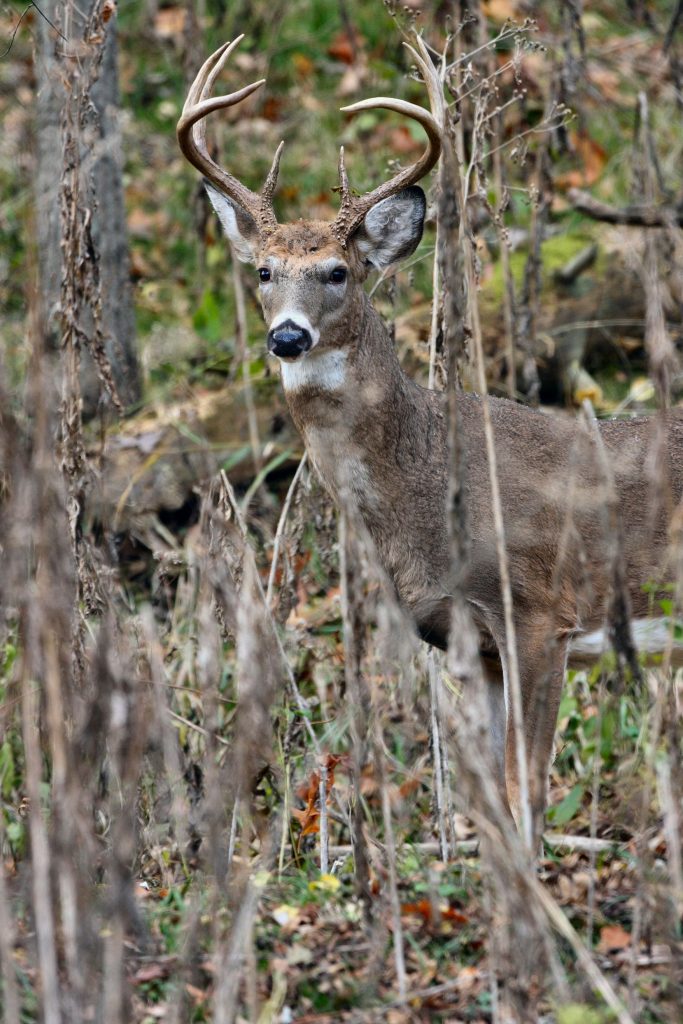I’ve looked at thousands of deer jaws; observed and handled hundreds of deer in 3 different states; and worked with white-tailed deer for 2 decades.
Can I accurately age a deer from a photograph? Or by antler size? Absolutely not!
Why? Because it’s not possible. And anyone who tells you different is pulling your leg (to put it mildly).
There are 3 methods to ESTIMATE the age of a deer:
- Pull a lower incisor tooth, send it to the lab, and count the cementum annuli
- Examine the lower jaw for tooth wear and replacement
- Snap a picture and take a guess
The most accurate method is the cementum annuli method. Many mammals, including deer, can be aged by staining a cross-section of the incisor and counting the rings that appear, just like on a tree. When tested, this method was 85% accurate for white-tailed deer through 9 years old (Hamlin et al. 2000). Counting cementum annuli takes time and money. And if the deer isn’t dead, there is a bit of a problem getting a tooth (it can be done, but whether the procedure is humane has been questioned).
Tooth wear and replacement methods of aging are more practical for management purposes. Deer can reliably be placed into 3 age classes (fawn, yearling, adult) (Gee at al 2002). For older age classes, however, you can forget it.
Of the 34 white-tailed deer biologists surveyed to test this method, 60% failed to correctly age known-age jawbones that were 2 years old or older. There is a tendency to over-estimate ages of younger deer (3-7 years old) and under-estimate the ages of older deer (>9 years old). And since the tendency is to over-age, the error doesn’t come out in the wash (i.e., the same number over-aged are not equal to the number under-aged) (Lockard 1972).
That’s why the Game Commission only ages to 3 age classes when collecting harvest data. It is accurate and sufficient for management purposes. PGC deer agers are required to attain a 95% or higher efficiency rating on the deer ageing exam. Agers are also required to retake the test every 3 years.
The last, and probably the most fun, method of deer aging is on the hoof. Ocular estimation of age based on antler size and body characteristics is a WAG (if you are unfamiliar with this acronym, Google it. It’s not “wives and girlfriends”).
Using morphometric ratios (e.g., chest depth to body length) from photographed, known-age bucks, a statistical model correctly aged 75% of the 1.5-year-olds, 85% of the 2.5-year-olds, 40% of 3.5-year-olds, and 0% (NONE!) of the 4.5-year-olds (Flinn et al. 2014). This was using a model with data and actual measurements.
Aging of a buck based on antler characteristics alone is fun and provides for hours of stimulating conversation but is impossible to do.
Why? Because antler expression is based on a complex interaction of age, nutrition, and genetics. With the first two overshadowing the third by a long shot. Just take a look at Buck 12786 – would you have guessed he was at least 4.5 years old?
In The Deer-Forest Study (as well as other research projects), captured deer are aged as fawns (about 8 months old) or adults (20 months old or older).
Obtaining a more specific age is not worth the effort. Have you ever tried to peer into the mouth of a dead deer to age it? It’s not easy. The teeth are farther back that you’d expect. It requires a “jawbreaker” tool to pry open the mouth (or knife) and a flashlight to see inside.
Can you imagine doing that on a live deer at 10 o’clock at night in 10-degree weather? Deer aren’t known for biting but stick your finger inside their mouth and I guarantee it will happen. Our trapping crews have enough to deal with as it is.
Besides, all the adults we capture will have the same survival and harvest rates (remember – no one else can tell exactly how old they are either) so we don’t need to know if they’re 2, 3, or whatever years old.
-Jeannine Fleegle, biologist
PGC Deer and Elk Section
Photo credits: jawbone, Jason Mansure; deer aging, PGC

